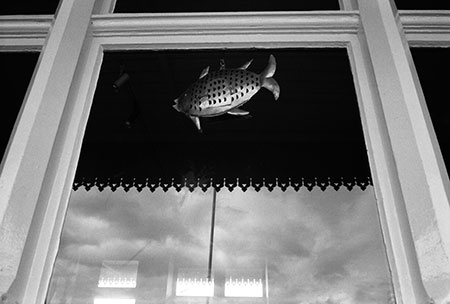Brooks Jensen’s podcast of November 16th makes an interesting point about the way that different artists work.
The tenor of his thought is that photographers tend to be less likely to be artists in other fields as well – in comparison with painters or sculptors etc. He is not claiming an absolute line here (please listen to the podcast), but a tendency.
I think he probably has something.
The question is ‘why?’.
What I’m about to say is riddled with exceptions and iffs and buts. I’ll try to deal with the major ones as I go.
Photography is a dramatically different art process from any artform where you start off with a blank canvas, a white sheet, or an empty space.
As a photographer I don’t build an artwork piece by piece. I don’t need an idea. I can’t dramatically alter a work once it has begun.
No, as a photographer, I put myself in positions where there is something to see. I subtract the things that I don’t want to include and then I press the shutter. Once I have pressed the shutter, 95% of the work is done.
This doesn’t mean that I can’t have a project in mind, or that I can’t have some thoughts about what I am doing in advance. But I can’t influence what there is; I can’t control to any great degree what will pass in front of my camera. I decide where to stand and when to press the button. This may explain our collective fascination with street photography. Is this the form of photography where the photographer has least control over what is in front of the camera?
There are photographers who work out in advance a picture and then work to create it. I’ve recently seen an interview with a photographer who can take months of preparation before getting to the camera work, and, even when shooting, will go days without making an exposure. I think such photographers are the exception.
I think that photography is most like the additive arts when still life photographs are involved. There is no great difference, I think, between the thought processes behind creating a still life painting and creating a still life photograph. I also think that the ‘clean sheet’ art closest to photography is drawing from life (or possibly watercolour painting). The production time is short enough, and the possibilities of reworking are limited enough, that the same ‘see and react’ process could be happening. Photography has been called ‘instant drawing’.
Brooks Jensen also noted, as an exception to his general view, that a considerable number of photographers have been musicians. I think that this makes sense. Musicianship is also an art where the important bit is in the doing. Not the thinking beforehand, nor the artefact afterwards.
The idea that such a large part of the art of photography has happened when the shutter is pressed makes sense of the observation that photographers don’t often show unfinished work for comment. Showing an unfinished work makes much more sense for an additive artform because somebody can say something that may significantly, rather than marginally, influence the final piece.
It also begins to explain some of the miscommunication about communication. If to begin an artwork you have to have an idea, then you are probably likely to bind that idea, in your mind, into the finished product.
So, photographers aimlessly wander around and randomly press the shutter button not having any idea in advance what they are trying to achieve……
Lots of people before me have said that ‘photography is about deciding where to stand and when to release the shutter’, so there is no credit to me in inventing that phrase. But it is a powerful one. Deciding where to stand doesn’t just mean ‘up a bit, down a bit, left a bit, fire’. It also means deciding where in the world to go and when to do it. But once you have done that you have to accept what there is. You can’t invent snow that has melted, or bring out a sun that doesn’t shine. You don’t create by adding. You don’t use your imagination, you use your eyes.
Whereas, if you start with a blank sheet, you can examine your idea and ask ‘is this an oil on canvas idea, or a linocut idea’ (or any combination you care to mention).
This is a very good description of what photographers do, whilst this is an incomplete, but nonetheless interesting, take on the f8-and-be-there serendipity mindset. By the by, the ‘f8 and be there’ idea is another take on the whole craft question – but that is for another time.
There are artists who are signficant photographers but who also are known in other art fields. Wright Morris was a novelist (I can’t explain that combination); David Hockney was a painter who did photography for a while (that is a much more likely way around for it to happen); Henri Cartier Bresson was a photographer who also drew (I think the phrase ‘instant drawing’ was his). Any more?
This entry also posted in Photostream.





